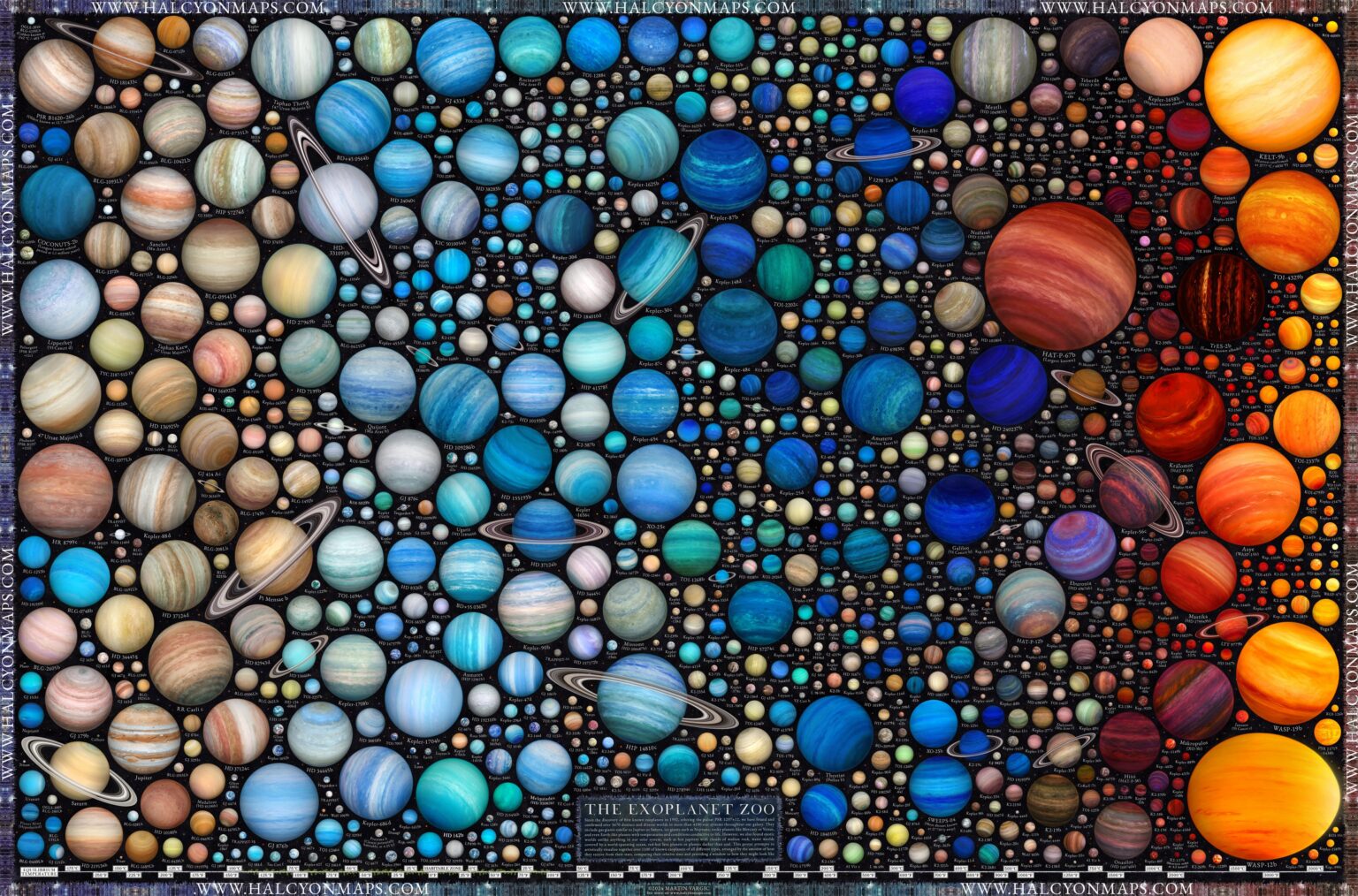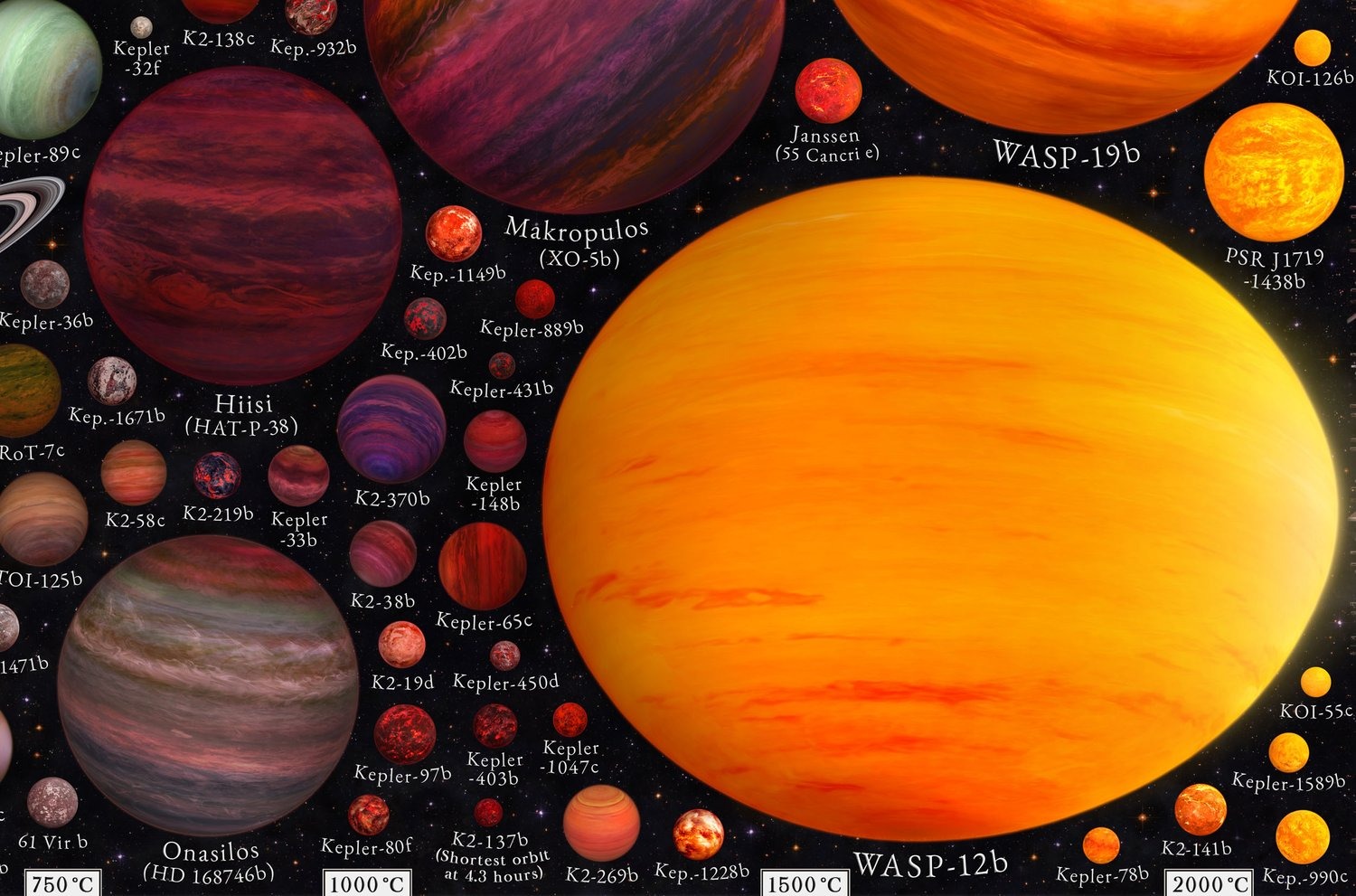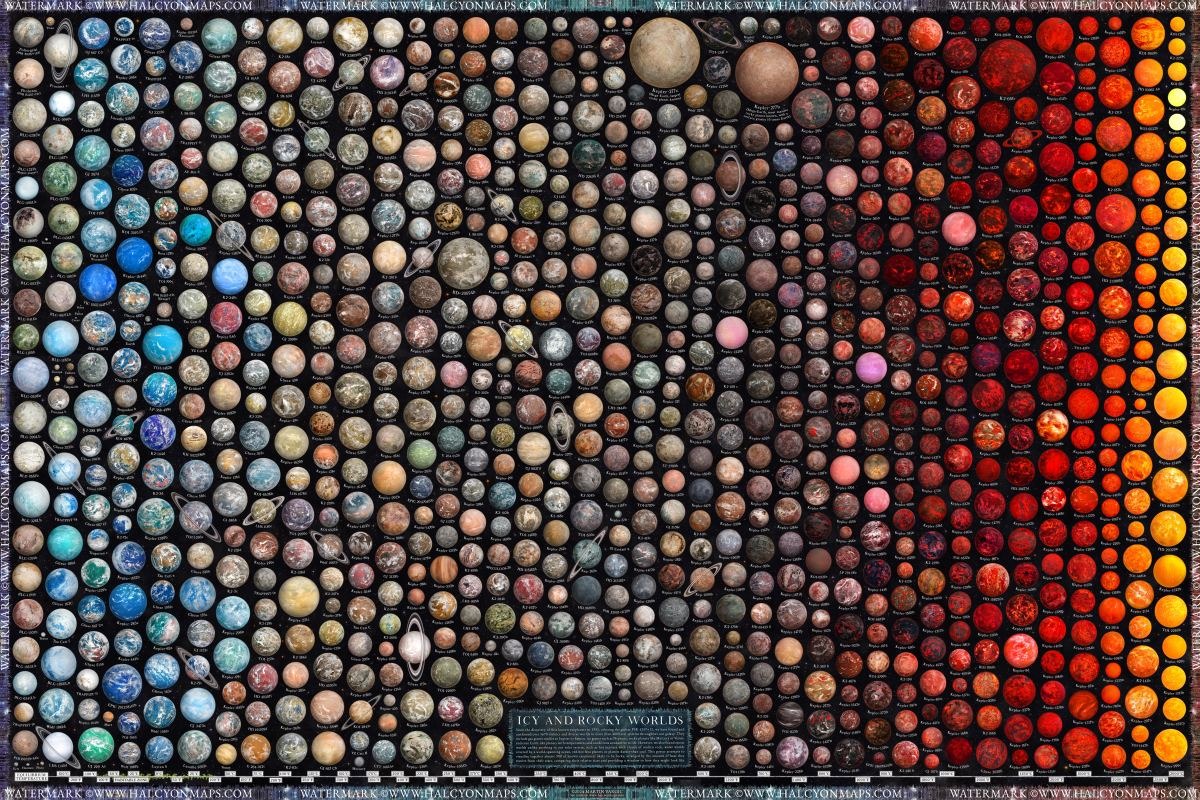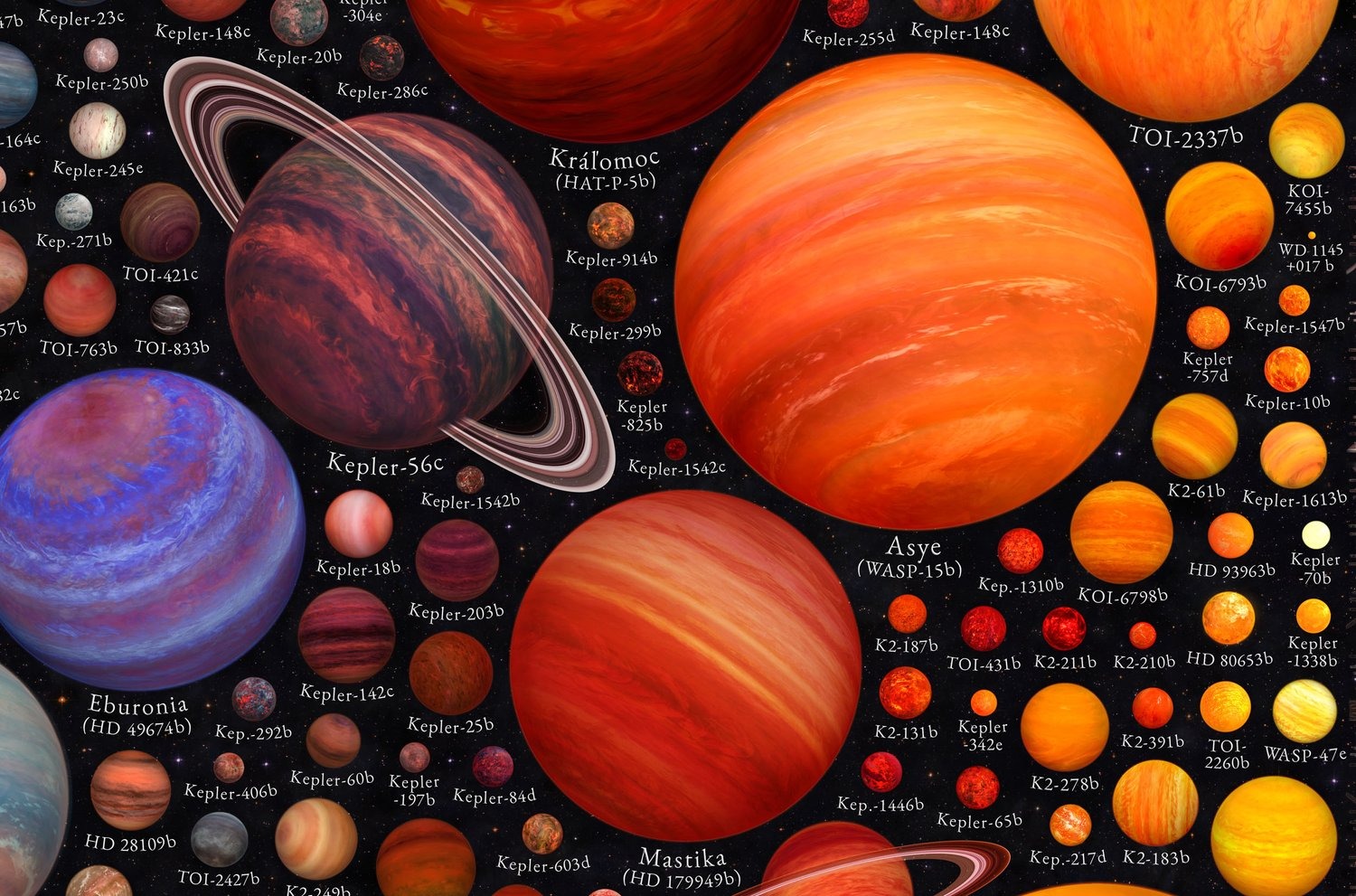Martin Vargic, an amateur astronomer, writer, and illustrator from Slovakia, has created two new infographic posters depicting exoplanets of different types and sizes. One poster is called “Icy and Rocky Worlds” and the other is called “The Zoo of Exoplanets”. The data for the infographics were collected from three exoplanet databases: The Extrasolar Planet Encyclopaedia, NASA Exoplanet Archive, and ExoKyoto.

“Both illustrations took about 6-7 months to create,” Vargic explained in an interview with Universe Today.
The infographics illustrate more than 1600 known exoplanets, ordered by the amount of heat from their stars, comparing their sizes. The posters were created using scientific models and up-to-date information. Thus, the author created a visualization for a better perception of distant worlds by the average reader.

The colors of the gas giants are based on the Sudarsky scale, which takes into account the different chemicals and temperatures of the planets’ atmospheres. Vargic also used existing illustrations of exoplanets as a source of information. The posters feature amazing exoplanets, including PSR-B1620-26b, the oldest known, and WASP-12b, a red-hot gas giant that is so close to its star that gravity has distorted it into the shape of a chicken egg.
A childhood passion
Vargic has been interested in astronomy since childhood. At the age of 10, he used his family’s telescope to observe lunar craters, Jupiter’s moons, and Venus’ phases despite light pollution in the area. “In the rare moments when I saw clear skies and the Milky Way, I was amazed by the number of stars,” says Martin Vargic.

In 2015, Vargic began to read books on astronomy, cosmology, space exploration, and physics, creating the first versions of his ambitious infographics. In 2019, after three years of work, he published the visual book Curious Cosmic Compendium, where 10 pages were devoted to exoplanets whose temperature increased page by page, up to brown and red dwarf stars.

You can see Martin’s work, including a high-resolution version of the infographic, at halcyonmaps.com.
Earlier we reported that life is best found on small exoplanets with large moons.

